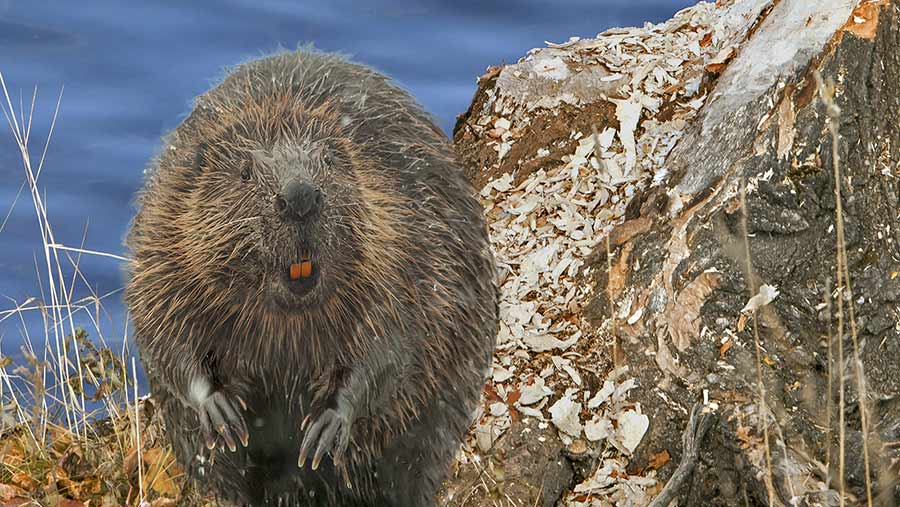Opinion: The pitfalls of the plans to reintroduce wildlife
 © Serhio777/Adobe Stock
© Serhio777/Adobe Stock A couple of years ago on my wife’s birthday, before taking a boat trip downstream of Canterbury, Kent, we went for a walk along the riverbank.
After a few hundred yards we came across a tree stump that looked as if someone had sharpened a giant pencil stub with a knife and stuck it in the ground, point up.
See also: Why Scots farmers need solution to lambs lost to sea eagles
About the author
 Paul Cobb
Paul Cobb
Columnist, Farmers Weekly
Paul Cobb is a Kent-based independent environmental land management adviser and a partner in FWAG (Farming & Wildlife Advisory Group) South East.
Read more articles by Paul Cobb
We looked at each other. Beavers – on the River Stour?
The man who took us upriver on the trip was nonchalant. So was the woman who ran the canoe hire place; we see them all the time, she said.
The local farmers I asked later concurred; it was an open secret.
So what’s all the fuss about reintroducing species once native to Britain, when an “accidental” release can go unchallenged?
Well, quite a lot, and it’s usually farmers who lead the call to stop the latest proposal for wolves, lynx, sea eagles or whatever to be released into the “wild”.
There are many successful reintroductions. I used to risk an accident driving on the M40 through the Chilterns gap in Oxfordshire, looking up and hoping for a glimpse of a red kite.
Now these birds have reached Kent. Water voles are also commonly captive-bred and reintroduced to sites where habitat is suitable.
Some fanatics for bringing back everything that ever roamed these islands will tell you the wolf was hunted to extinction.
But long before that, human population pressure and declining habitat saw Mr Wolf’s numbers dwindle. Extinction comes at the end of a process, not the end of a gun.
Suitable habitat and food sources are the keys to success. Without both, reintroductions will not survive, even in large areas, and declining species won’t come back to your farm.
For example, you need nesting habitat, plus both summer and winter food, to provide for resident farmland birds.
To justify bringing back species such as wolves, reintroduction enthusiasts point to expanding deer numbers. As top predators, wolves could control deer populations, they say.
But in this country, deer and sheep coexist, and wolves can’t read the labels that say “eat me” on a deer and “don’t eat me” on a sheep.
Lynx have been successfully reintroduced in many European countries. They are beautiful animals, and I would be glad of a chance to see one.
But farmers in these countries don’t necessarily agree, despite compensation for stock losses and the argument that they can benefit from ecotourism.
Recently, Defra has announced that the government will provide opportunities for the reintroduction of formerly native species as part of the 25-year Environmental Plan “where there are clear environmental and socio-economic benefits”.
Needless to say, not everyone believes there will be benefits.
But the cuddly beavers, chewing their way through the odd tree on the riverbank, are harmless, surely?
A position statement from six fisheries conservation organisations – including the Game and Wildlife Conservation Trust – says otherwise, especially in the case of rivers that are the habitat of migratory fish such as salmon.
The statement probably sums up most farming and countryside organisations’ attitudes to reintroduction; it needs research, impact assessment, guidelines and strategies to manage the inevitable consequences before you open a single cage.
Will the funding be there for all that? I doubt it. And even if it is, it would probably be better to put it into helping farmers provide for our existing wildlife, rather than introducing novelties.
